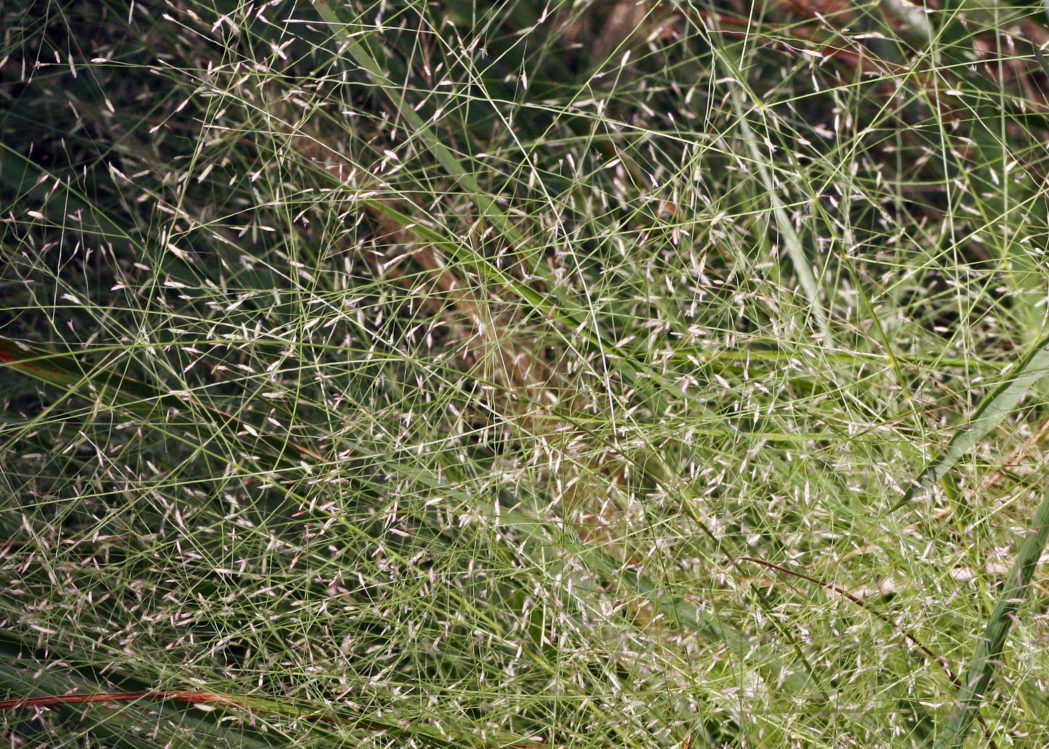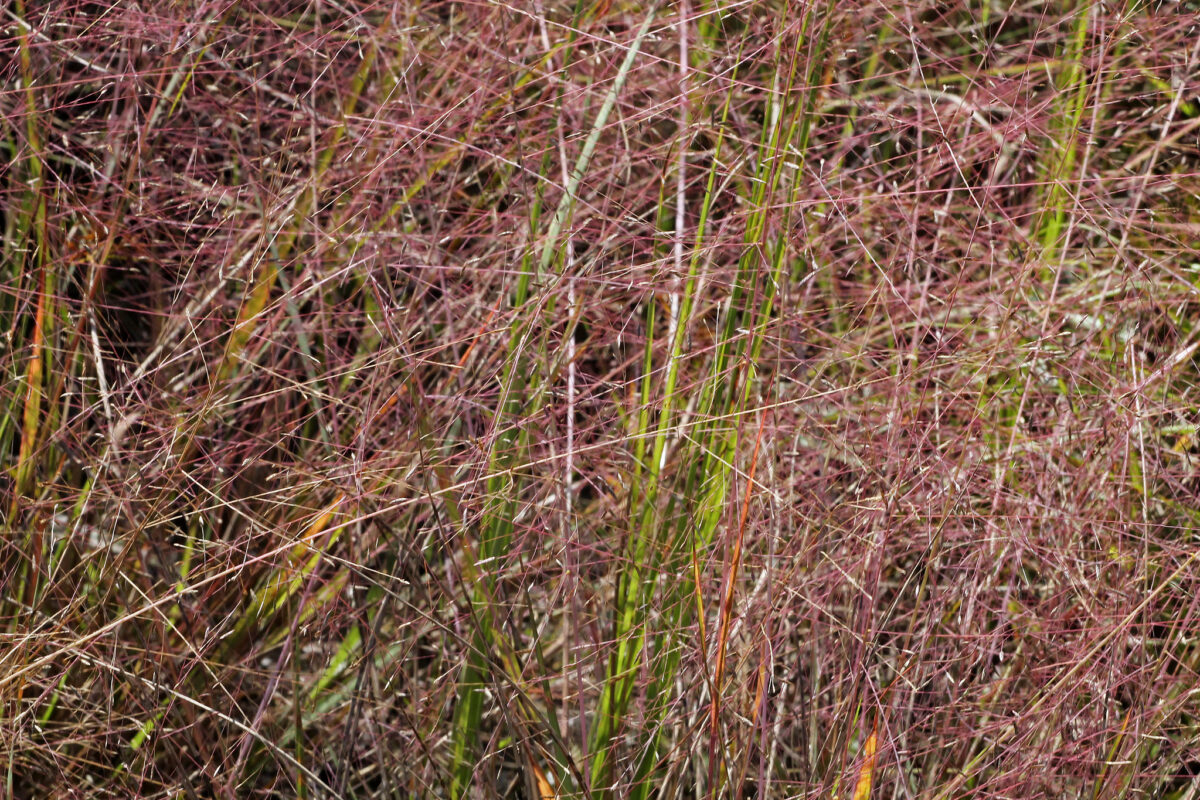Elliott’s lovegrass
Pictured above: Elliott’s lovegrass (Eragrostis elliottii) by Mary Keim. Click on terms for botanical definitions. View post as a PDF.
Elliott’s lovegrass (Eragrostis elliottii) is a perennial bunchgrass that occurs naturally in flatwoods, scrub, prairies, pond and wetland edges, and disturbed sites throughout Florida. Its delicate little flowers appear in such abundance that they cover the plant in a billowy beige haze. It typically blooms in late summer through fall. Its seeds are tiny yet prolific, providing plenty of food for invertebrates and small birds, which use the dense foliage for cover, as well. The plant is a larval host for the Zabulon skipper.
Elliott’s lovegrass flowers are small, whitish beige and borne in wispy panicles. Leaves are long, linear and erect or arching with a silvery or bluish hue. Its fruits are dry, one-seeded caryopses, typical of grasses. Seeds may be dispersed by wind, gravity or on the fur of passing animals.
The genus name of Eragrostis comes from the Greek ἔρως (eros), or “love,” and ἄγρωστις (agrostis), meaning “grass” (hence the common name). The species epithet elliottii and common descriptor “Elliott’s” honors American botanist Stephen Elliott (1771–1830).
Family: Poaceae (Grass family)
Native range: Throughout Florida
To see where natural populations of Elliott’s lovegrass have been vouchered, visit florida.plantatlas.usf.edu.
Lifespan: Perennial
Soil: Moist to dry, well-drained sandy soils
Exposure: Full sun
Growth habit: 1–2’ tall with a broader spread
Propagation: Seed, division
Florida regions of landscape suitability: North, Central, South
Garden tips: Elliott’s lovegrass can tolerate a variety of conditions. It does well in nutrient-poor soils, is drought-tolerant and can handle limited inundation. Its clump-forming habit makes it a great choice for a mass or border planting or as a groundcover, particularly because its foliage remains attractive all year. The plant is also helpful in controlling erosion.
Caution: A South African cultivar, Wind dancer lovegrass, is often sold, as is the nonnative Weeping lovegrass (E. curvula), also from South Africa. Be sure you are purchasing the native species by sourcing from local growers.
Elliott’s lovegrass is available at nurseries that specialize in native plants. Visit www.PlantRealFlorida.org to find a native nursery in your area. Seeds may be available through the Florida Wildflowers Growers Cooperative at www.FloridaWildflowers.com.
Learn more about Elliott’s lovegrass from the Florida Native Plant Society and the Institute for Regional Conservation.
For information on other Eragrostis species, see these resources:


